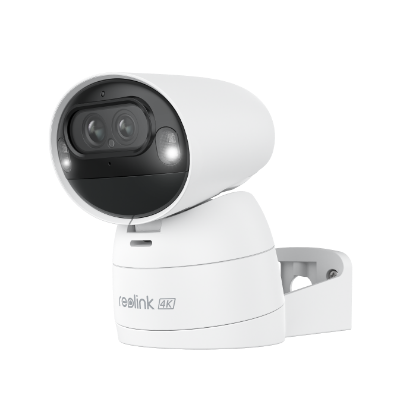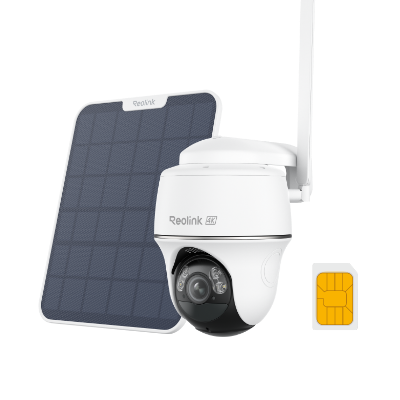Guide for Picking The Best Garden Wildlife Camera in the UK
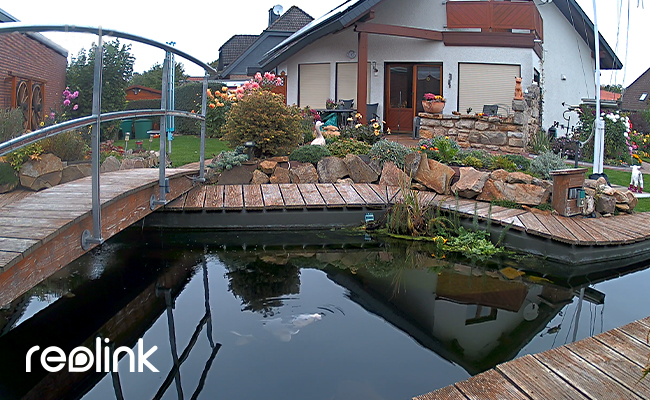
More like a lifestyle, a lot of people in the UK love spending time in their garden. Perhaps you are one of them or you just grow your vegetables and simply like to relax in the natural beauty around.
As a nature enthusiast, you may be curious about the critters who visit your garden. By installing a wildlife camera, you can keep tracking them easily. This guide will tell you how to choose the best wildlife camera for observing wildlife visitations of your yard.
- What is a Wildlife Camera, and Why it Can be Used in Your Garden?
- List of Wildlife Camera Brands and Prices in the UK
- Factors to Consider When Choosing a Wildlife Camera
- Camera Options You Can Choose For Your Garden
- What Can You See With a Garden Wildlife Camera?
- How to Set Up a Wildlife Camera in Your Garden
- Conclusion
What is a Wildlife Camera, and Why it Can be Used in Your Garden?
A wildlife camera, also known as a cellular trail camera, is often used by hunters, wildlife enthusiasts, and researchers to capture footage of animals in their natural habitat.
Wildlife cameras can be placed in your gardens to keep account of animals that come around. They might even help you catch a clue of the cause of your missing vegetables.
These cameras often have ideal features for garden photography, such as high-quality lenses and sensors, fast shutter speeds, low-light performance, and weather resistance.
In addition, you can use wildlife cameras with close-up lenses and the time-lapse function to document the growth of plants and flowers over time. By recording images and videos of wildlife in the garden, you can learn more about your local natural ecosystem.
List of Wildlife Camera Brands and Prices in the UK
If you're ready to start spying on what your furry and feathery garden visitors are up to when you aren't around, we've got you covered. Below is a table of trail cams we've curated for use in your garden, as well as their key features and prices.
Factors to Consider When Choosing a Wildlife Camera for Your Garden
Keep in mind that these cameras come with various features, so you'll want to choose one that matches your needs. Here are a few things you need to understand when picking a camera.
Remote Access Connectivity
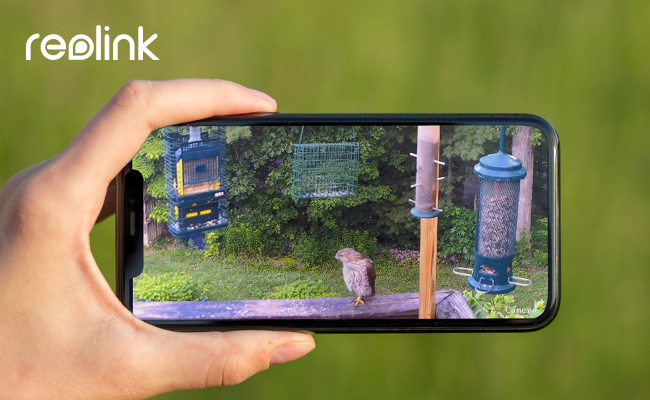
This is what allows you to access the captured footage on your phone or computer. It could be via 3G, 4G, or WiFi.
WiFi provides a steadier signal than cellular data, which means you can rely on the connection of cameras even in areas with weak cell service.
In addition, WiFi uses less battery power, allowing the camera to stay on for extended periods.
Trigger time
Trigger time is the amount of time that the camera takes to capture a photo after detecting movement. For garden trail cameras, trigger time can mean the difference between getting an image of an animal and missing the shot entirely.
A camera with a shorter trigger time will be more likely to capture an animal in the act, while a camera with a longer trigger time may miss the shot.
Garden wildlife cameras typically have trigger times ranging between 0.1 and 1 second, with shorter and longer times suitable for fast-moving and slow-moving animals, respectively.
Weather Resistance
This is usually measured as an ingress protection (IP) rating, written as "IP," followed by two digits, as in IP68. The first digit indicates how dust-resistant the camera is increasingly on a scale of 1 to 6. The second digit shows how waterproof the camera is on a scale of 1 to 9.
Generally, a trail cam with at least an IP55 IP rating would be right for your garden, no matter what the weather is like in your part of the UK.
Resolution
This refers to how clear the pictures or videos taken on the camera will be. Usually, quality wildlife cameras would have resolutions ranging from 2 to 10MP (megapixels), while picture resolution will likely be between 12 to 24MP.
You may also see descriptions like 720p, 1080p, and 4K on these cameras. 720p and 1080p are HD options and refer to 1MP and 2MP, respectively, while 4K translates to approximately 8MP.
The higher the megapixels, the clearer the video/picture appears.
Infrared Light
When it's dark, wildlife cams use infrared LEDs for lighting, which can come in two types.

Low-glow LEDs are common in cheaper wildlife cams and give off a barely visible red light when capturing footage. The light is easily noticeable and can scare off animals.
No-glow LED cameras emit an almost invisible light that is less likely to be noticeable to animals.
SD Card Capacity
Always remember to check the SD card capacity of a camera before making a choice, particularly the one with higher-resolution pictures and videos, because these pictures and videos may take more memory space. So ensure the SD card capacity is big enough, especially if you want to restore the files for a longer time.
Camera Options You Can Choose For Your Garden
You aren't just restricted to trail cameras for your garden; there are other valid options you can explore. Let's take a look at some of them below.
Trail camera
A trail camera can be an excellent tool for taking pictures and videos of wildlife in your garden. Here are some reasons why:
- They are usually battery-powered, often with AA alkaline dry cell batteries, which are readily available and cheap.
- The cameras are small and compact; they can be easily hidden and won't take up too much space in your garden.
- They are designed to be resistant to damage from the weather.
- Infrared LEDs enable them to capture footage even in the dark.
Overall, a trail camera is the best option for recording wildlife visits to your garden.
Wireless security camera with Pan & Tilt
While security cameras are mainly used to monitor activities around your home or store, they also fit greatly for your garden as a wildlife monitor.
The pan and tilt feature of a security camera is valuable as it allows you to direct the camera's focus across an area for a broader view. Some are battery-powered, making them suitable for gardens without nearby electrical outlets.
Installing this type of security cameras is easy, and you can place them at any high vantage point. Like the trail cameras, these cameras also have night vision capabilities, allowing them to capture footage in low-light conditions.
Finally, many security cameras now offer cloud storage and remote viewing functions, making it easy to review footage from anywhere.
As a result, security cameras are an increasingly popular option for homeowners who want to watch their gardens. Following are two good options:
Reolink Argus Track has a 4K 8MP Ultra HD resolution and flexible power options such as solar or battery. Its pan, tilt, and 6X hybrid zoom capabilities provide extensive coverage and detailed views. Equipped with color night vision technology, it ensures clear footage even in low-light conditions.
With stable 5/2.4 GHz dual-band Wi-Fi support, remote access and control are seamless. Whether for home security or wildlife tracking in your garden, the Argus Track offers reliable performance and advanced features to meet your surveillance needs effortlessly.
4K Dual-Lens Wi-Fi Solar/Battery Camera
4K 8MP Ultra HD, Auto-Zoom Tracking, Pan, Tilt & 6X Hybrid Zoom, Color Night Vision, Dual-Band Wi-Fi.
Reolink Go PT Ultra is a cutting-edge wireless camera designed for versatile use, featuring 4K 8MP Ultra HD resolution and color night vision for clear monitoring day and night. With battery or solar power options, it offers flexibility in installation, making it suitable for both home security and wildlife observation in your garden.
Equipped with smart detection capabilities and a wide pan and tilt range of 355° and 140° respectively, the Reolink Go PT Ultra ensures comprehensive surveillance.
4K 8MP Wire-Free 4G LTE PT Battery Camera
4K 8MP; Smart Detection; 355° Pan & 140° Tilt; Battery/Solar Powered; Color Night Vision; Smart Real-Time Alert.
PoE security camera
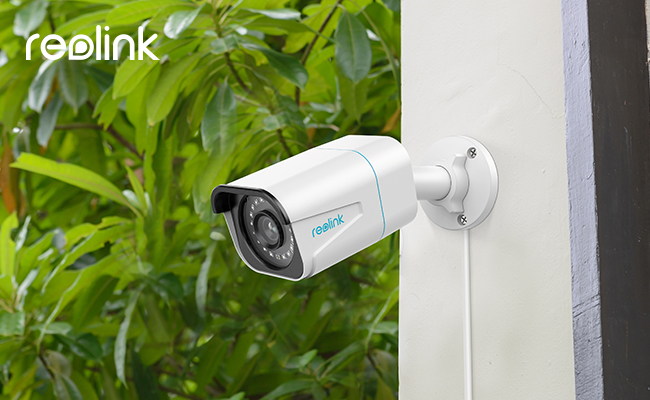
Power over Ethernet (PoE) cameras are pretty unique ones. The PoE technology allows these cameras to draw power from special Ethernet network cables rather than batteries or a power connection.
As long as there is network connectivity, the camera can be always powered. You can even live-stream the footage on your computer or YouTube channel.
The only drawback is that POE cameras are a little more expensive than regular wireless security cameras, and their installation work is more challenging. However, they are always worth the investment.
What Can You See With a Garden Wildlife Camera?
Animals, mostly. You get to see the coming and goings of your local wildlifes in your garden; birds, foxes, and, if you are lucky, deer. You would also get a glimpse of the elusive nocturnal wildlife, including owls, hedgehogs, and badgers.
If you are a bird watcher, one tip for attracting birds is to put a bird feeder in the camera's view.
Placing a wildlife camera in your garden is a good choice to protect your home since its features also work for surveillance. A visible camera could serve as a deterrent to burglars and trespassers.
How to Set Up a Wildlife Camera in Your Garden
When setting up a wildlife camera in your garden, you first have to decide whether you want it visible or not.
If you want to hide the camera, there are a few options for installation. One is to hide the camera in a birdhouse and place it among other such structures in the garden. You could also install the camera inside a tree hollow or behind a false rock panel. You just have to ensure that the entire garden is visible from wherever the camera is placed.
If you plan to make the camera visible, your camera installation options are more flexible. These include fences, lampposts, and anywhere else with a clear view of the garden.
Setting up a wildlife camera is quite easy and can be done in a few simple steps.
- Power up the camera. After picking a suitable spot, insert the SD card and AA batteries into the camera and turn it on. If it is a rechargeable wireless security camera with its rechargeable battery, fully charge the battery, load the battery, and turn on the camera.
- Configure and sync the camera on your phone with the app.
- Check the feed on your phone when the configuration is complete to make sure that everything is working correctly.
- Check the camera's battery life and replace or recharge it every few months.
By following these simple steps, you'll be able to set up a wildlife camera in your garden in no time.
Conclusion
Using wildlife cameras can be a great way to help you understand and appreciate the beauty of nature in your garden. You just have to ensure you pick the right one.
In this post, we've outlined what we believe are the key factors to think about when purchasing a wildlife camera and shared our top picks for the best models on the market right now. We hope you find it helpful!
Trail cameras are becoming increasingly popular, as they offer a convenient way to check on wildlife activity without having to physically be present in the area. Reolink's KEEN Ranger PT is a trail camera that offers 4G network connection and PT function. I hope you will find it to be a valuable addition to your trail camera arsenal.
Have you tried using a wildlife camera in your garden? If so, please share your tips and experience in the comments below.
Search
Subscribe for the Latest Updates
Security insights & offers right into your inbox





























































































































































